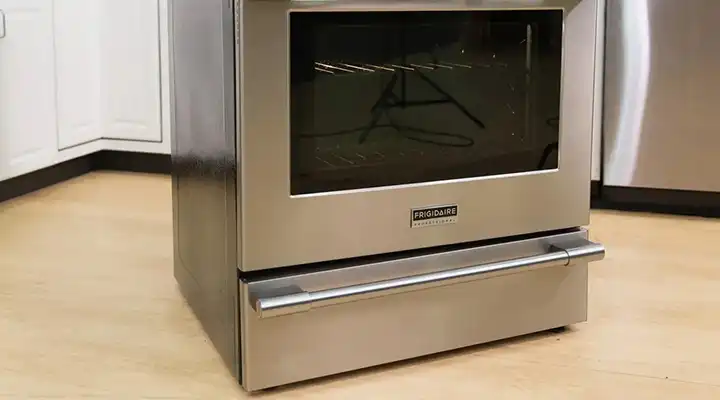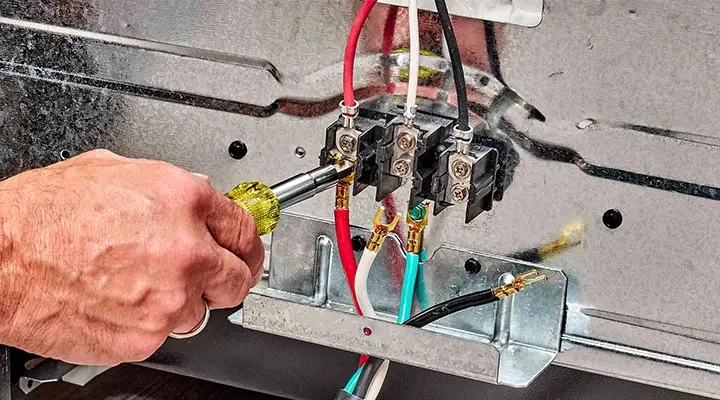Can I Put Pizza Directly on the Oven Rack – Is that Okay?
Yes, most pizza types can be placed right on the oven rack for baking. However, several key factors influence the decision and best practices for cooking pizza on a bare oven rack.
The type of pizza being cooked—frozen, homemade, thin, or deep dish—determines the proper rack placement and support needed during baking. Oven temperature also impacts outcomes when using the oven rack for pizza, with most recipes calling for temperatures of 425°F or higher. The design of the actual oven rack—thick vs. thin bars—affects potential sticking and crust crispiness.
Understanding the nuances of these elements is important for optimizing results when baking pizza in the oven without a pizza stone or baking sheet. Checking pizza frequently, using handling tools, and adjusting oven rack placement based on the type of pizza can lead to excellent outcomes in putting pizza directly on the oven rack. Crisp, evenly baked pizzas are possible right on the rack with some tweaks and best practices.
Stay with us below; I am going to cover key considerations and tips for successful oven rack pizza cooking.
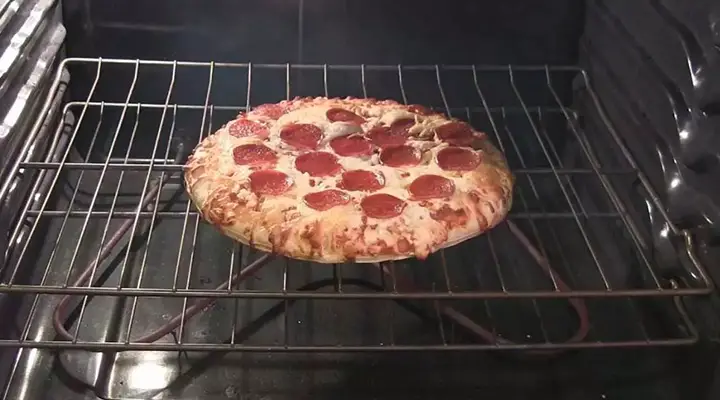
Can You Put Frozen Pizza Directly on the Oven Rack?
Frozen pizzas explicitly state oven rack cooking instructions right on the packaging. This makes safely placing frozen pizza directly on the oven rack straightforward. Brands like DiGiorno and Red Baron call for baking frozen pizzas on the center oven rack at temperatures around 375-425°F.
Cooking frozen pizzas on the oven rack delivers even heat distribution for crisp crusts. One potential issue is dripping cheese or toppings once the frozen pizza thaws and heats. Using a baking sheet on the rack below can catch any melted cheese or sauce drips.
Monitoring the bake time is also key with frozen oven rack pizzas. Set timers and check pizzas as cook times come to an end. Frozen pizzas can go from baked to burnt quickly since direct rack exposure encourages rapid crisping.
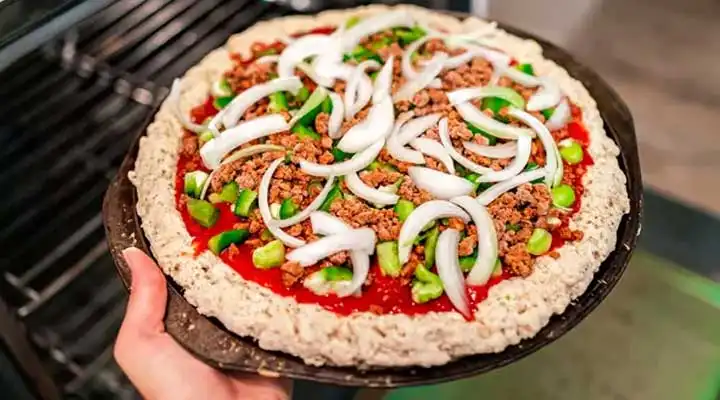
To answer the question “Can I put a frozen pizza straight in the oven?” – yes. Frozen pizza packaging instructions indicate oven rack baking. Place frozen pizzas directly on the center oven rack, use a lower baking sheet to catch any drips, set timers, and monitor bake times for perfect results every time. Crisp crusts without the burnt aftermath can be attained with attention while cooking frozen pizzas on the handy oven rack.
Homemade Pizza: Can You Cook Pizza Directly on the Oven Rack?
Yes. Homemade pizza can absolutely be baked on the oven rack, but there are a few considerations around achieving crust crispiness and avoiding sticking issues.
The exposure of airflow beneath the entire pizza while cooking on the oven rack should promote ideal crispiness. However, homemade pizza crusts often end up a bit soggy on the rack since they lack the dough-proofing commercial operations utilize. Still, the rack alone can work for thin crust or Neapolitan homemade pizzas.
For best outcomes, lightly dust the rack with semolina flour or cornmeal before sliding the homemade pizza onto the center rack. This prevents sticking issues which foils crisp crust results. Use a pizza peel to easily transfer homemade pizzas and retrieve them after they bake.
While homemade pizza can be cooked directly on oven racks, using a baking stone offers a better crust crunch. That said, the rack alone delivers decent results with the right handling tools, oven temperatures around 500°F, and a watchful eye while baking. Avoid disappointingly soggy homemade crusts with these pro tips for rack-baked pizzas boasting impressive crispiness on par with pizzerias.
Deep-Dish Pizza: Supporting with a Baking Sheet or Stone
When making pan-style deep-dish pizzas loaded with toppings and ooey-gooey cheese, direct oven rack placement poses problems. Deep-dish pizzas require adequate support during baking for the best results.
Placing deep-dish pizzas directly on oven racks leads to subpar outcomes. All the chunky sauce, numerous meats, veggies, and extra cheese overload the crust. Heat exposure from underneath coupled with the weight causes deep-dish crusts to burn or cook unevenly when placed on the oven rack alone.
For successful deep-dish bakes, always set these hefty pizzas on top of a sturdy baking sheet or pizza stone. The additional support helps prevent burning the crust. It also enables the extra interior ingredients to bake at the right rate for a perfectly cooked deep-dish pizza every time.
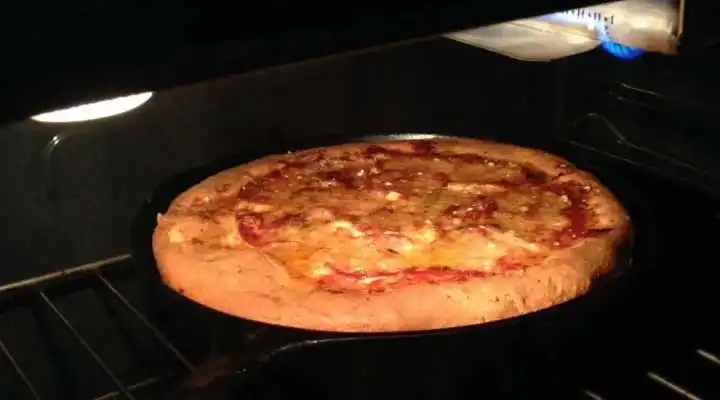
Refrain from putting deep-dish pizzas straight on your oven rack. While thin, Neapolitan or homemade pizzas can generally handle rack-only placement, provide deep-dish pizzas with backup from a pizza stone or thick baking sheet down below. The support lends to superior outcomes letting you indulge in all that delicious deep-dish goodness.
Can I Put Raw Pizza Dough on the Oven Rack?
When considering placing raw pizza directly on the oven rack, it’s crucial to understand the nuances involved. Here’s a comprehensive look at the process and the challenges associated:
Cooking Raw Pizza Dough on the Oven Rack
While it is technically feasible to put raw pizza directly on the oven rack, this method is not without its hurdles. Raw pizza dough, being softer and more pliable than pre-cooked dough, presents a potential issue of stretching and, in extreme cases, falling through the oven rack.
Why Raw Pizza Dough Shouldn’t Go on the Oven Rack?
Raw pizza dough, in its uncooked state, lacks the structural integrity necessary to support toppings during the baking process. Placing it directly on the oven rack risks a compromised crust, as the dough may stretch, sag, and fail to maintain its shape, resulting in a messy and uneven outcome.
Alternative Options:
To circumvent the challenges associated with placing raw pizza dough on the oven rack, consider these alternative options:
Pizza Stone or Pizza Steel: A pizza stone or Pizza Steel provides a stable surface that distributes heat evenly, promoting a well-cooked crust. These options offer a reliable foundation for raw pizza dough, preventing sagging and maintaining the structure.
Pan or Skillet: Opting for a pan or skillet is another effective alternative. These vessels provide a contained space for the raw dough, offering support and ensuring the pizza retains its shape during the baking process.
Oven Temperature’s Influence on Cooking Pizza
Oven thermostat settings significantly sway the results of cooking pizza directly on the rack. Both high and lower temperatures provide pros and cons to consider.
Cranking an oven to higher temperatures like 500°F or above promotes quick pizza crust crisping when placed right on the rack. However, the high heat also brings a narrow margin of error between baked and burnt. Home ovens reach hotter temperatures than commercial deck ovens, so monitor pizzas diligently during quick bakes to avoid charred crusts.
For moderate oven temperatures around 400°F, utilizing a baking stone or steel is preferable to a bare oven rack for crisping the crust sufficiently. At lower heats, the rack alone often leads to a paler, soft crust lacking the desired crunch. The stone solution helps transfer heat efficiently even at moderate temperatures for excellent crispness without the burning risks inherent to extremely high oven heat.
To answer “How to cook pizza in an oven without a stone?” utilize the highest oven temperature possible in your model for direct rack bakes. Monitor closely, erring on the side of pulling the pie sooner rather than later as blackened crusts develop rapidly under intense heat. For more leeway, default to a store-bought or homemade baking stone with moderate 400°F temps for crispy, golden oven rack pizza minus the char.
Do All Oven Racks Perform the Same During Pizza Cooking?
Not all oven racks are equal when it comes to effectively cooking pizza right on the rack. Traditional-style oven racks can spell disaster for homemade pizzas in terms of sticking. But newer, thinner oven racks allow for greater success in baking pizzas sans baking stone.
Standard oven racks consisting of thick, widely spaced metal bars make crust sticking inevitable. All that exposed metal surface area essentially welds the rising pizza dough in place during baking. To prevent tearing pizza crusts on retrieval after baking, use a nonstick baking mat between the pizza and oven rack as an alternative.
Meanwhile, modern or upgraded oven racks provide a better shot at baking pizza minus a baking stone thanks to improved designs. Thinner racks have narrowly spaced bars allowing for more airflow and less surface area for dough to adhere to. These racks lend well to experimenting with pizza cooked completely au naturel—no stone or baking sheet necessary.
Both rack varieties still require vigilance while pizza bakes to prevent burning. But for purposefully crispy crusts, consider replacing bulky baked-on factory racks with slimmer, sleeker oven racks. Their improved performance encourages tastier homemade pizzas off the convenience of the oven rack alone.
Do You Put Pizza on the Top or Bottom Rack?
A common question that arises when baking pizza in the oven is whether to place it on the top or bottom rack. So which is better for getting a crispy, well-baked crust? Here are some considerations around oven rack placement.
The most important factor is understanding your oven’s heat patterns. In many ovens, the bottom heating element cycles on more, making the bottom rack hotter. The top rack gets less direct heat, mainly receiving circulated air from below.
For pizza, steady heat from both directions helps crusts crisp best. So the center rack position gets both top and bottom exposure for even browning top and bottom. This dual heat makes the center rack ideal.
If forced to choose one extreme, the bottom oven rack usually works better to ensure the crust gets direct bottom heat. Just watch the edges closely to prevent over-browning pizza bottoms on the low rack near intense bottom elements.
Keep in mind that factors like pizza style (deep dish may need more shelter up top), oven make and model and use of baking stones also impact results when debating rack position. Get to know your unique oven’s hot and cool spots for specialty items like pizza. With the right experiments, you can discover if the bottom, middle, or top racks excel for baking pizza to crisped perfection.
Pros and Cons of Cooking Pizza on the Oven Rack
Cooking pizza directly on the oven rack offers notable advantages but comes with drawbacks as well depending on pizza style and home oven setup.
Pros:
- Crispier crusts form through rack heat conduction
- Allows for even pizza baking without rotation
- Eliminates the need for extra pizza stones or sheets
Cons:
- Risk of pizza dough sticking to metal bars
- Less golden brown crust color without stone
- Not well-suited for deep dish or heavily topped pizzas
The exposed rack crisps pizza crusts nicely but holds the potential for tearing and residues. There’s also less room for error without a baking stone to regulate temperature fluctuations.
For homemade or thin-crust pizzas, the pros of exceptional crispness and convenience likely outweigh any sticking issues solvable with parchment paper or a watchful eye. For deep dishes or those less comfortable without a baking stone safety net, the cons carry more weight to avoid disappointing results.
Tips for Cooking Pizza on the Oven Rack
Follow these tips when cooking pizza on the oven rack for the best outcomes:
- Preheat Oven: Heat oven to the highest temperature possible, ideally 500°F+ for fast, crisp crusts.
- Use Pizza Peel: Slide pizzas on and off racks smoothly with a wooden pizza peel or long spatula.
- Monitor Bake Time: Set timers and inspect pizzas often to avoid over-baking since direct rack contact crisps rapidly.
- Let Cool Before Serving: Allow oven rack pizzas to rest a few minutes before slicing to let the cheese set and avoid burning mouths.
Properly preheating the oven ensures the rack can immediately crisp dough to perfection. The right handling tools prevent torn crusts or toppings from sliding off on transfer. And vigilance while baking coupled with patience in plating prevents ruined dinners.
Along with selecting baking-friendly pizza types, attention while prepping and cooking is key for successfully utilizing handy oven racks for scrumptiously crisp pizzas worthy of a pizzeria.
As a Pizza Lover, You May Also Ask For
Can I put pizza in the oven without a tray?
Pizzas like thin crust, New York, or Neapolitan style often bake fine right on the oven rack with no tray or stone.
Where to put pizza in the oven?
The center oven rack position evenly bakes pizza best. Heat reaches from above and below without hot spots.
How to keep pizza from dripping in the oven?
Use foil or parchment paper when baking deep-dish or heavily topped pizzas prone to dripping, catching any slides.
Closing Remarks
Pizza can cook directly on oven racks, but success depends on the pizza variety and oven setup. Thin crust, New York, or pre-made frozen pizzas fare best for direct rack bakes. Deep dishes and heavily topped pizzas do better with underlying support from stones or baking sheets. Bake times require close monitoring for perfect crispness without burning. Maximizing oven rack airflow potential relies on the right pizza type, temperature regulation, handling tools, and vigilance for delicious results rivaling pizza joints.

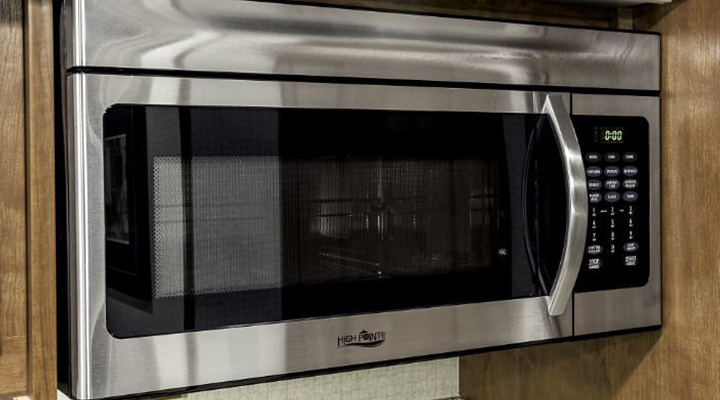
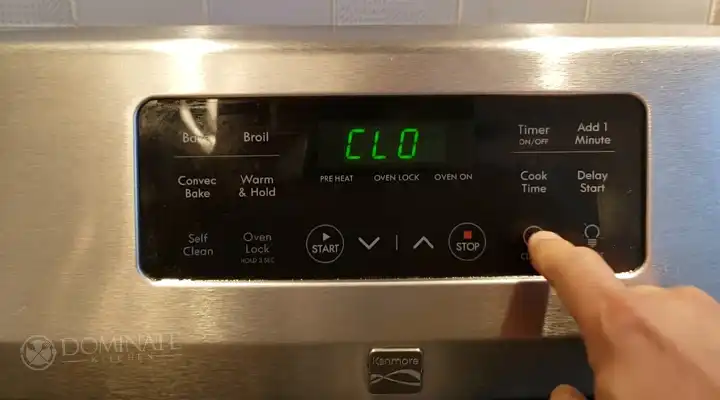
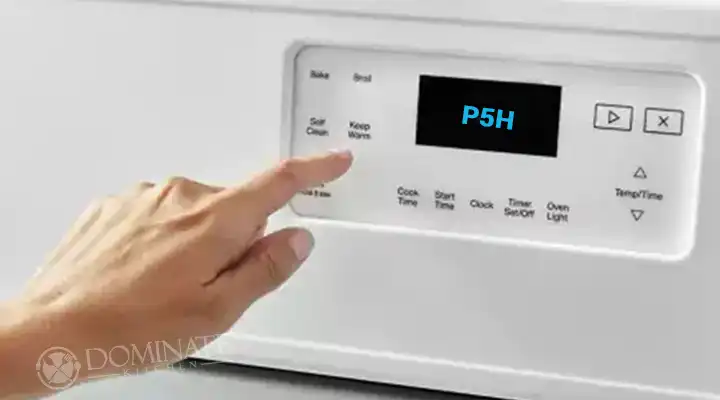
![Is a 900 Watt Microwave Powerful Enough? [ANSWERED]](https://www.dominatekitchen.com/wp-content/uploads/2023/09/Is-a-900-Watt-Microwave-Powerful-Enough.webp)
